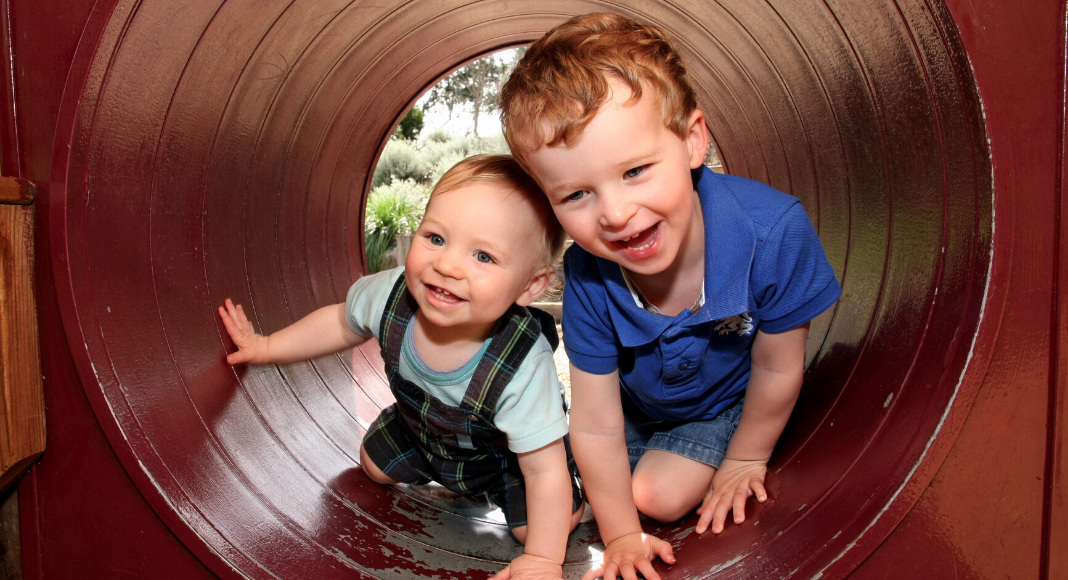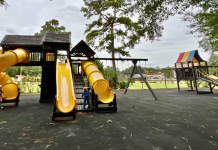I read a story recently about a woman who was sitting in a park. She witnessed a nicely dressed mother and child walking on a rainy day. The child was wearing a raincoat with matching rain boots, and there just happened to be a big, juicy puddle right in their walking path. As the child went to stomp in the puddle, the mother reprimanded the little boy, pulled him closer to her and around the water. Yes, this was just a story, but as a mom who brings her kids out almost daily– I see this scenario all the time.
My days as a preschool teacher are over. One of my fondest memories of my teaching career was to walk around while the children were having free play. I taught a classroom of 22 three-year-old students. All of their sweet little voices making up games, laughing and exploring. This exploration molded them on how to function in a group setting.
 The Benefits of Unstructured Play
The Benefits of Unstructured Play
I often hear moms talk about wanting to start flashcards with their little ones. They tell me that they’re wanting to buy a program or a preschool workbook to have their toddlers practice writing letters and shapes. While the ideas listed are wonderful tools, I’ve found that young children truly thrive through the experience of open play. A place where they can make their own rules and learn through exploration at their own pace.
Being Distraction-free
When my kids start an activity that they can be somewhat self-sufficient in, I get excited. I can have two minutes to myself to play on my phone, put some makeup on, FaceTime my mom, etc. Until I really started feeling guilty for not being more “present” during these so-called breaks. I am a former teacher after all.
The perfect opportunity for me to give positive praise in a relaxed, play-focused environment is such a valuable teaching tool. I love social media, but what Brenda fed her labradoodle for breakfast certainly isn’t more important than your child knowing that you are engaged in their play with them.
Positive phrases to spark conversations:
“I love the way you built that tall tower!”
“Mommy loves to play with you.”
“What game are you playing?”
“Are you having fun?
Setting Expectations
Toddlers love choices. Did you know that there is literally a certain way to speak to young children? The biggest mistakes that I’ve made as a mother and a former teacher were unrealistic expectations or simply not verbalizing expectations in advance. If I want to take my 11-month-old and 2.5-year-old to Target, I know that the expectation is that they will only last so long browsing the aisles. The same thing is true in giving your child room to make discoveries, play pretend, and learn at his/her own pace while playing. If something feels forced, your child will most definitely catch on to that and will want to resist.
Let Them Set the Tone for Learning
I set up an activity for my two-year-old. His job was to place his rainbow-colored counting teddy bears in a patterned row on long pieces of painter’s tape. His interest in my version of the activity was a negative ten. He pulled up the tape, kicked the bears all around the room, and I ended up giving him some space. To my surprise, he picked up his bucket of cars and pretended that the leftover pieces of tape were train tracks. He was doing the same activity but in a way that he preferred.
 A Safe Learning Space is a Healthy Learning Space
A Safe Learning Space is a Healthy Learning Space
Our definition of “safe” and a young child’s version is very different. A child usually knows what they are/are not allowed to do in their household. Even my own son will turn to look at my facial expressions before he chooses to do something in question. The bottom line is a young child shouldn’t be reprimanded for being a child. That means dirt. That means patience. That means explaining the same thing every single day until you want to scream.
The first time my son asked me if I was mad, I felt awful. His sweet, chubby cheeks and bright blue eyes looking up at me, “You mad, Mama?” And even though, yes, I felt mad at that moment, I don’t want him to feel on edge because I couldn’t get my adult self in check to deal with him and his baby brother.
Bottom line, it’s my job as his mother to create a space for my children to feel the most comfortable learning in.













